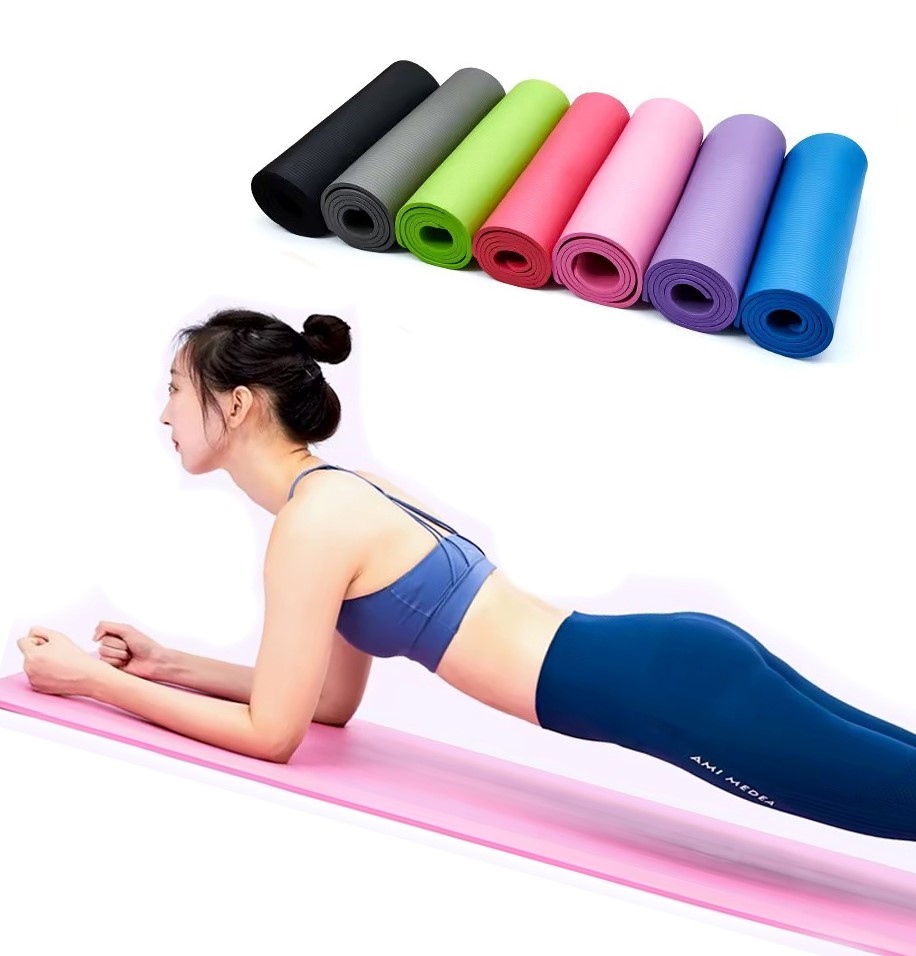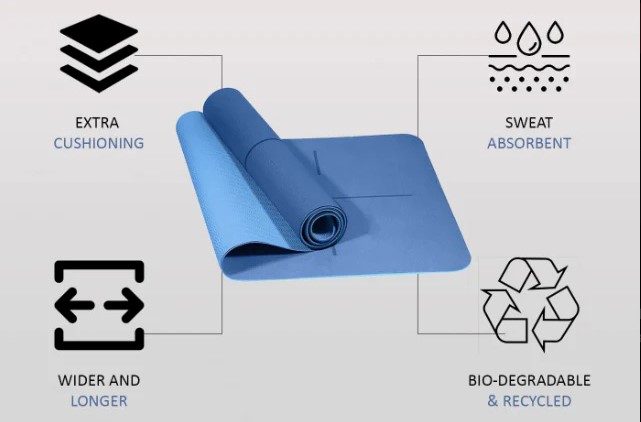A yoga mat is more than just a surface to practice on; it's the foundation of your yoga journey. It provides the necessary support, comfort, and stability to help you perform your asanas with ease and confidence. With a wide variety of yoga mats available in the market, choosing the right one can be a daunting task. This article aims to guide you through the essential aspects of yoga mats, including their types, features, and how to care for them.

Importance of a Yoga Mat
1. Non-Slip Surface: A good yoga mat provides a non-slip surface, ensuring you maintain stability and balance during your practice.
2. Comfort: It offers cushioning to protect joints and provide comfort during long sessions.
3. Hygiene: A personal yoga mat ensures cleanliness and reduces the risk of infections.
4. Durability: A high-quality mat is durable and can withstand regular use.
5. Portability: Many yoga mats are lightweight and easy to carry, making them perfect for travel or attending classes.
Types of Yoga Mats
1. PVC Mats: Traditional and affordable, PVC mats are durable but can be heavy and less eco-friendly.
2. TPE Mats: Made from thermoplastic elastomer, these mats are lightweight, non-toxic, and easy to clean.
3. NBR Mats: Durable and budget-friendly, NBR mats are less eco-friendly and can be less comfortable.
4. Cork Mats: Eco-friendly and naturally grippy, cork mats are antimicrobial and provide a firm surface.
5. Jute Mats: Biodegradable and eco-friendly, jute mats are less grippy and may require a towel for added support.
6. Rubber Mats: Durable and grippy, natural rubber mats provide a stable surface but can be heavy and have a strong odor.

Features to Consider When Choosing a Yoga Mat
1. Material: Choose a material that aligns with your values, whether it's eco-friendliness, durability, or affordability.
2. Thickness: Thicker mats (6-8mm) provide more cushioning, while thinner mats (3-5mm) offer better stability.
3. Length and Width: Ensure the mat is long enough to accommodate your height and wide enough for your practice.
4. Grip: Look for a mat with good grip to prevent slipping during poses.
5. Texture: Some mats have a textured surface for added grip, while others have a smooth surface for ease of movement.
6. Weight and Portability: Consider the weight of the mat if you need to transport it frequently.
7. Eco-Friendliness: Opt for mats made from sustainable materials if environmental impact is a concern.
Yoga Mat Care
1. Cleaning: Wipe your mat down with a damp cloth and mild soap after each use. For deeper cleaning, use a mat spray or wash it with soap and water.
2. Drying: Allow your mat to air dry completely to prevent mold and mildew.
3. Storage: Store your mat rolled up with a towel inside to help maintain its shape and absorb any residual moisture.
4. Avoid Exposure: Keep your mat away from direct sunlight and heat sources to prevent damage and fading.

Conclusion
A yoga mat is an essential tool for your practice, offering support, comfort, and stability. By understanding the different types of mats, their features, and proper care, you can make an informed decision and choose the perfect mat for your needs. Remember, the right yoga mat can enhance your practice and contribute to a more mindful and balanced lifestyle.
Post time: Jun-18-2024
